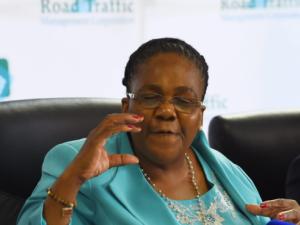New rules regulating the use of remotely piloted aircraft systems (RPAS), popularly known as drones have been signed by the Minister of Transport, Ms Dipuo Peters and will be officially be put into effect 01 July 2015
Director of Civil Aviation Poppy Khoza said the South African Civil Aviation Authority, a member of the International Civil Aviation Organisation (ICAO) RPAS Panel, had engaged with a number of key role players such as operators, manufacturers, and other airspace users and after months of amendments and incorporating requests by various stakeholders a draft was approved by the Minister of Transport on 5 May 2015.
Rules consider SA’s unique aviation conditions
The announcement of the official regulation means the SACAA has in fact taken the lead in formulating its own recommended standards and practices, ahead of global regulator ICAO.
“In the absence of guiding documents from ICAO, regulators such as ourselves have had to swiftly derive measures to address the regulation deficiency in response to a growing demand to regulate this sector.”
“The SACAA took into account the national safety and security needs. We also took into account the work done by ICAO thus far and what is likely to be an international position and customised it into local regulations, taking into account our unique conditions.”
Khoza said the regulations related to RPAS are specifically governed according to Part 101 of civil aviation regulations. She also said drone rules do not relate to toy aircraft or unmanned free balloons or other types of aircraft which cannot be managed on a real-time basis during flight.
All operators to have a CAA approved remote pilot licence
Essentially the new rules require a person who operates a drone to have a CAA approved and valid remote pilot licence as well as a letter of approval to operate the drone. Approval letters will be issued for 12 months at a time.
Drones also cannot be sold unless the seller makes the purchaser aware of the SACAA’s criteria but proof of licence does not seem to be a prerequisite for purchase.
Those who fly drones adjacent to or above a nuclear power plant, prison, police station, crime scene, court of law, national key point or strategic installation will be seen as breaking the law.
Cannot fly within 50m of crowds
Additionally, drones cannot be flown within 50m above or close to a person or crowd of people, structure or building – without prior SACAA approval.
The new regulations also states that an RPA shall give way to manned aircraft.
In addition to this, RPA pilots will be required to tune into the air traffic services for the controlled airspace they will be flying in as well as keep a logbook of all flying times and distances.
Khoza conceded that the regulations would not please all the stakeholders concerned.
Setting aviation benchmark
“Let us all be reminded that this is the very first attempt at regulating this new industry. Moreover, there are no best practices to benchmark against anywhere in the world.”
Khoza said that the SACAA would use the next few weeks to put the final touches to the internal processes required to provide the necessary approvals and also to ensure that enforcement processes are in place in case the need arises.
“As the SACAA we are not claiming that these new regulations are static. Given the rapid pace of technological development in this area, we treat these RPAS regulatory framework as a continual work in progress, and hence we will continue to engage with industry to refine the regulations when, where and as deemed necessary.
“We will also take into account what ICAO will propose – when they are ready – as globally accepted Standards and Recommended Practices.
“Until then I urge all operators and airspace users to observe and comply with these new regulations. We should always remember that in aviation there is absolutely no room for errors…. as errors usually result in loss of lives!
Safety over profits
Khoza said that while the aviation industry could be lucrative, the SACAA was determined to curb those individuals and entities “determined to put profits ahead of the overall safety of other airspace users”.
“The process of developing these regulations principally included extensive consultation with the industry and as the regulations are now signed by the Minister, the Regulator has every intention of still engaging the industry further. We believe there is a correct platform for everything and there is therefore no reason for anyone to feel excluded from this process.”
Khoza confirmed the SACAA would also be conducting national industry workshops to discuss the implementation of these regulations as part of the role-out process leading to its implementation on 1 July.
Source: Traveller24

